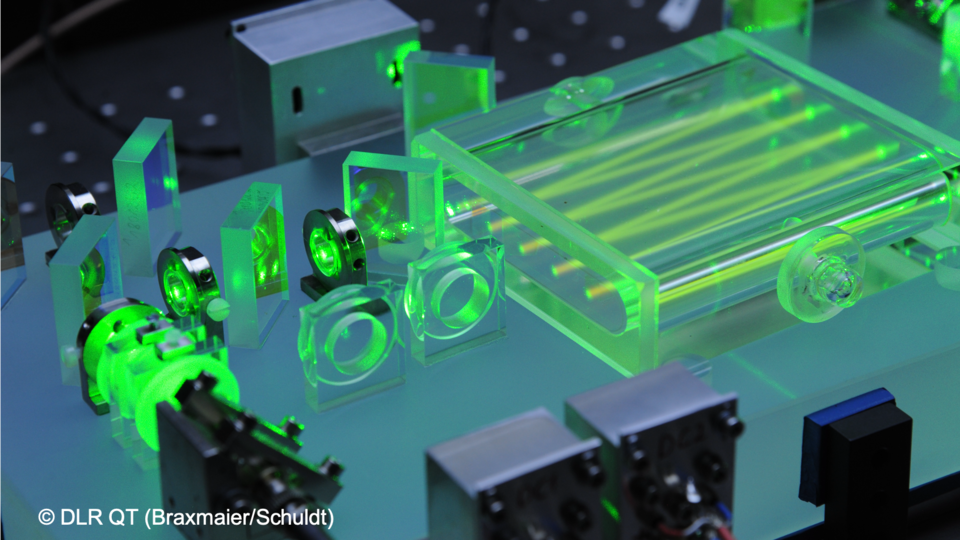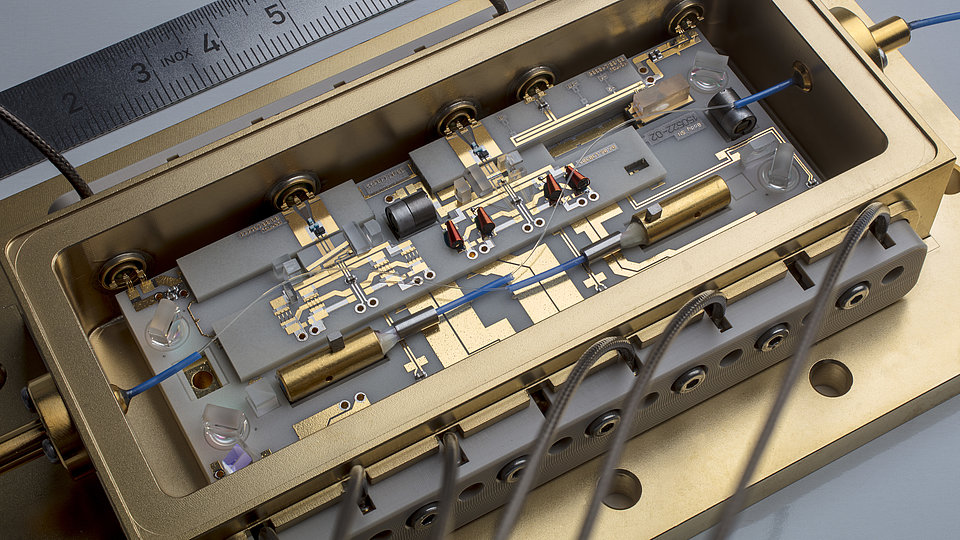Quantum Sensing
The advent of quantum sensors is causing a paradigm shift for many metrology applications. The most prominent field of use is time keeping: today, optical atomic clocks clearly outperform the well established microwave atomic clocks in terms of accuracy and stability. Optical clocks also play an important role in relativisitc geodesy and geophysics, for which the corresponding clock-based sensors have to be compact and robust to meet performance requirements on moving platforms like trains, trucks, drones, planes of even satellites. Photonic technologies, specifically lasers, are key to the realization of portable and robust optical clocks and other types of quantum sensors.
We develop and realize modules for quantum sensor applications like atomic and molecular optical clocks and optical frequency references, light-pulse atom interferometers for inertial navigation and fundamental physics applications, or sensing of electro-magnetic fields. Photonic modules comprise narrow linewidth diode laser modules, spectroscopy modules and "beam preparation" or "distribution" modules, that create proper polychromatic light pulses out of cw lasers for implementation of a quantum sensor.
We use our proprietary hybrid micro-integration technology for the assembly of the photonic modules in order to meet the stringent requirements on compactness and robustness typical for application on moving platforms.
The JoKaRUS sounding rocket mission (TEXUS 54) demonstrated, for the first time, space-operation of an optical frequency reference based on precision iodine-spectrocopy onboard a sounding rocket. We also focus on the development of laser and distribution modules required for the realization different types of very compact and robust strontium-based optical atomic clocks, for which we have to cover the wavelength range of 689 nm to 813 nm. The smartLC project aims at delivering very compact, easy-to-use and easy-to-integrated laser and frequency reference for potassium-based light pulse atom interferometers.
The ultimate goal of system integration is integration at wafer level. We are hence developing chip-level-integrated complex lasers, like a monolithically integrated extended cavity diode laser, for ultra-compact optical clocks based of the rubidium two-photon transition at 778/2 nm.

